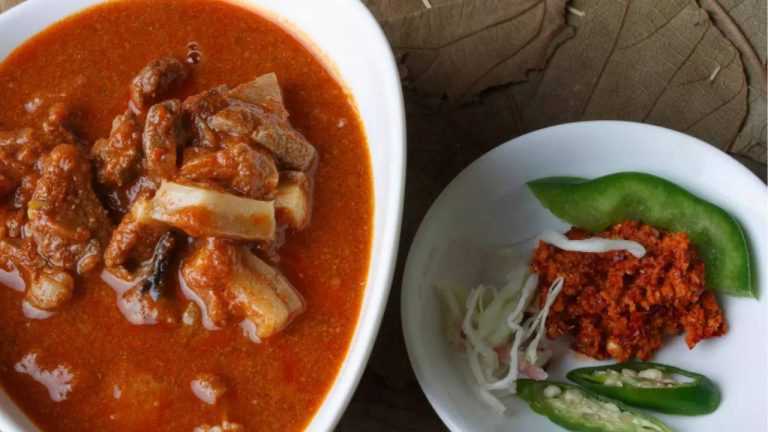With the advent of spring, Indian cultures herald a season of abundance and renewal with vibrant celebrations like the quintessential Goan festival, Shigmo, also known as Shigmohatsav. The festival represents the end of winter and the maturity of crops as well as the celebration of a fruitful year to come.
With the onset of spring, many Indian cultures celebrate a period of abundance, harvest and rebirth. Be it Holi, Vasant Panchami or any of dozens of other springtime celebrations across the country, everyone is in a festive frame of mind. in By airThe small country of India with a big personality, festival The season is Shigmoalso known as Shigmohatsav which will be celebrated in Goa from March 26 to April 8, 2024.
Derived from the Konkani word 'Shigmotsav', which translates to 'celebration of colours', it is rooted in tradition and folklore. Despite Goa's history of colonialism, and the fact that the Portuguese conquered Tiswadi and banned Xingmu in the 16th century, the festival, which has its roots in Konkani folklore, has managed to retain its unique character far from Portuguese influences.
Goa celebrates spring
The Shigmo Festival begins with Holi and extends over fourteen days, from the ninth moon day to the full moon day. It features intricately designed floats showcasing the culture of Goa, starting with village songs and tributes, and dressing up as the village deity on the first day. As with any carnival atmosphere, there are sweets worth savoring. During our Shigmo Parade, you can enjoy sweets like candy floss, chocolate ice cream, and popcorn. For Holi, staple foods like vafda, jalebi and thandai feature, while Gudi Padwa is celebrated with Puran Puli and Sharkhand. Rang Panchmi, the fifth day, is marked by the widespread use of the traditional red powder known as gulal. From this day onwards, lively processions, marked by dances and sprinkling of gulal, take place in the temple precincts, symbolizing jubilant celebration.
Shigmo is a vital part of Goa's cultural fabric, celebrating life, tradition and spirituality. In the past, when agriculture dominated Goa, farmers worked hard during the winter to grow their crops and sought relief through entertainment and religious ceremonies. Shigmo gave them a chance to relax after their hard day. Today, Shigmu occupies an important place in the cultural landscape of Goa, mainly involving non-Brahmin communities but also witnessing enthusiastic participation from Brahmins. At the heart of this festival are traditional dances such as Guf, Dhangar, Gudimudni, Samai and Murulu, each offering a glimpse into Goa's diverse cultural heritage.
The Shigmu Festival marks the end of winter and the ripening of winter crops. It comes in two forms: Dakto Shigmo (small Shigmo) and Fadlo Shigmo (large Shigmo). Dhakto Shigmo is celebrated mainly by farmers, workers and rural communities, while Vhadlo Shigmo is a large-scale celebration in which everyone participates. As with any Goan celebration, food is also crucial to the spirit of Shingmo. Traditional Goan dishes like 'sorpotel', 'vindaloo' and 'fish curry' are cooked and enjoyed with friends and family. In addition, the festival provides an opportunity to enjoy the famous local drink “feni”, made from cashews or coconuts.
Here are 5 classic Goan dishes you can try during Shingmo period
The word “Vin” is derived from vinegar and “ahlo” means garlic in Portuguese. This dish was initially known as Vindahlo, and then gained the name Vindaloo due to its potato content (“aloo” meaning potato). It usually consists of pork, onions, peppers, garlic, vinegar and various spices. The masala is prepared using chili peppers and other ingredients, mixed with meat and vinegar, and left to marinate overnight. The dish is then sautéed with onions and additional herbs.
A tangy non-vegetarian pickle made from small local prawns, this dish can be eaten as part of a larger meal or enjoyed on its own with rice. The sour flavor comes from local coconut vinegar which not only ensures its unique taste but also helps in preserving the mixture for longer periods.
The word 'Suru' in Konkani refers to alcohol or liquor. Sorpotel, also known as sarapatel, is a popular Goan delicacy, which is prepared using pork, beef or lamb liver. The meat is parboiled and the fat is fried. Then add onions, garlic and prepared masala along with various spices and herbs. Sorpotel can be enjoyed at any time of the day, although some prefer it for breakfast.
Referring to the sour preparation ambot tik is a Goan dish with Portuguese influences. “Ambot” refers to acidity, while “tek” refers to spiciness. Kashmiri red pepper is added for heat and kokum (Garcinia indica) is added for its sour flavour. Fish or meat, usually shark, is cut into cubes and combined with onions, tomatoes and masala to prepare this delicious dish.
A rare vegetarian addition to Goa's meat-heavy menus, this unique dish is a vegetarian stew that combines toor dal and chana dal with a variety of vegetables like carrots, potatoes, green beans and chicken drumsticks. We enhance it with a spicy coconut paste made from Kashmiri red chillies and grated coconut, along with other spices. This dish is very popular among the Konkani community in Goa, we serve this soup with rice topped with ghee for more flavour.

